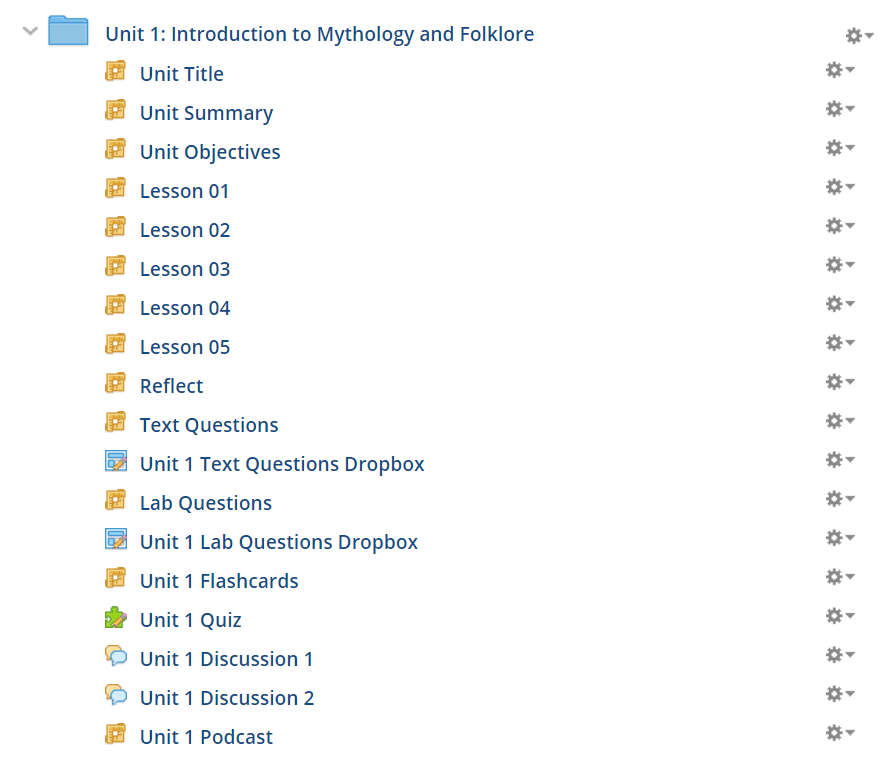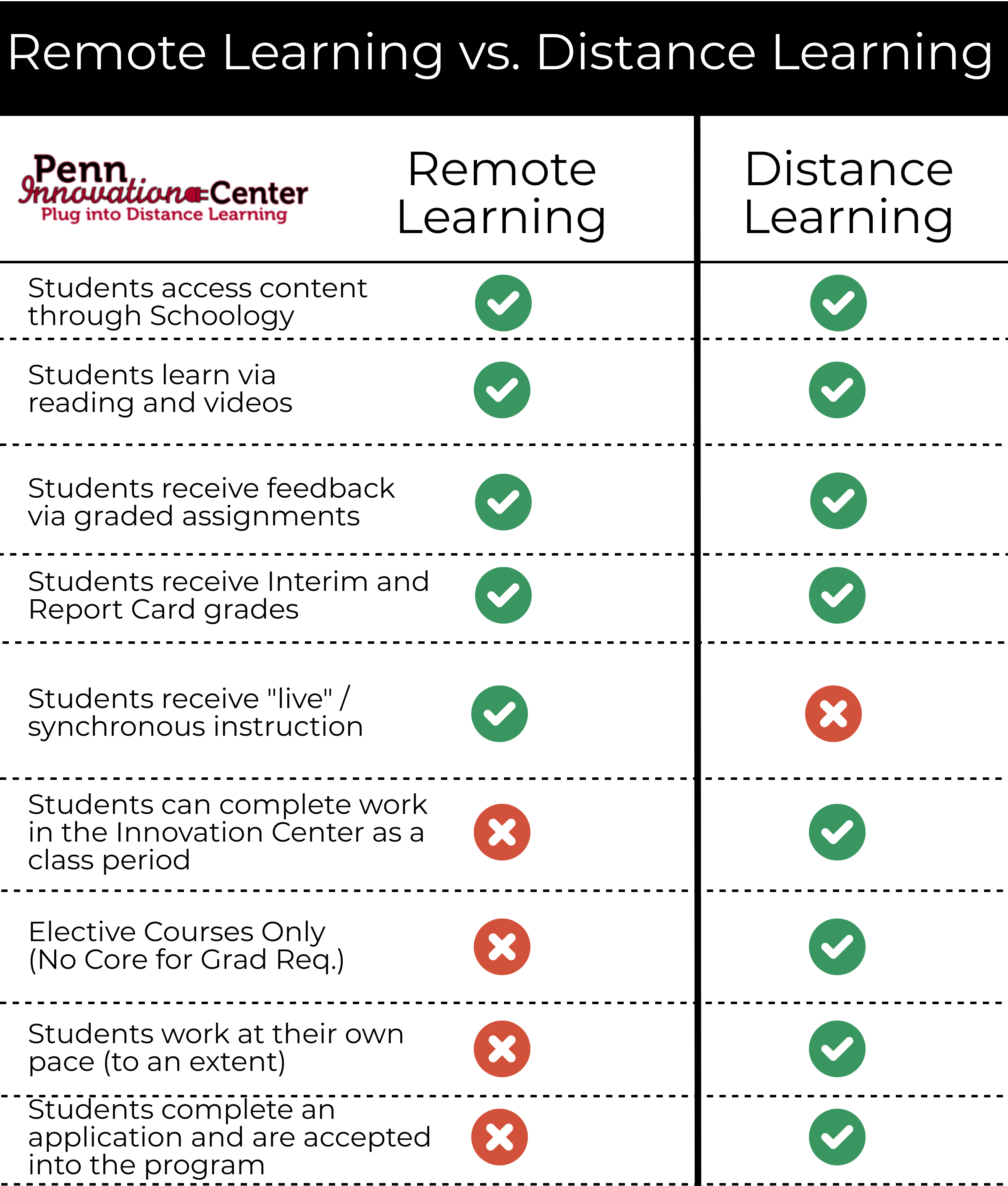Distance Learning: How Does It Work?
What is a distance learning course like?
What most courses are like:
Each unit will have several lessons to teach you the content. Lessons are usually readings. That’s right… you learn by READING. No one is standing in front of the room telling you what to do.
After you finish the readings, there are text questions to answer. If you are referring to something you learned from the text while answering the questions, you must cite it! All sources should be cited using APA format.
Then, there is a lab assignment that will explore the topic further and apply that understanding. Some labs might include a Tedx Talk, but many require you to research on your own. Some courses have multiple lab assignments and/or projects.
Next is a quiz. The quiz will assess how well you understand the material presented in the unit. You will only be able to take the quiz one time.
There are a couple of discussion boards in each unit too that will allow you to give your opinion and reflect on the content. You are expected to ALWAYS write using complete sentences, with proper spelling and grammar. Points are taken for ANY assignment with spelling and grammatical errors. Discussion boards are no different.
Once you finish all of the items in the unit, you will move right along onto the next unit. Most courses have eight or ten units. Mid-way through the course is a midterm exam, as well as a final exam at the end of the course. For instance, if a course has eight units, the midterm exam will cover content from Units 1-4 and the final exam will cover content from Units 5-8. These exams factor into your marking period grades.
Courses are either a semester-long or full year. The full-year courses tend to have more projects within each unit and dig deeper into the content.
Some courses may have modules instead of units and contain interactive activities.

The Difference Between
Remote Learning & Distance Learning
How to Submit Assignments
To submit Text Questions or other assignments, you will need to copy and paste the questions/prompt to a Word or Google Doc. Once you’ve finished answering the questions, you will go to the “Dropbox” assignment in your unit folder and click “Submit Assignment”.
You can either upload a doc/docx file or if you used Google you would click on the “Resources” Tab> “Apps”> “Google Drive”. Find the file and check the box. Once checked, an “Import” button will appear. Click Import and then “Import File”. And that’s it!
Don’t see the video tutorial? Click here!
Who does the grading?
For each distance learning course, a William Penn teacher will do the grading. The teacher paired with the course has the content knowledge to be able to give you valuable feedback on the topics in the course. For instance, a Social Studies teacher will facilitate the History of the Holocaust course while a Science teacher runs the Astronomy course, etc.
You will probably never see this teacher face to face during the course, even over Zoom. Unless you happen to have this teacher for something else in your schedule, you will only interact with this person online. Ms. Cuje and Ms. Haber are in the Innovation Center to provide you with support but you will “hear” from your course instructor through feedback on assignments, course updates, and Schoology messages.
How will your instructor communicate with you?
Every distance learning course is set to the Updates as the landing page. This means you will need to click on “Materials” to get to your assignments. We made the “Updates” section, the landing page in each DL Schoology course because your instructors will be posting weekly updates. It is important to read any updates each time to log into the course.
Instructors may also message you privately using Schoology inbox.
Take time now to clear out your Schoology inbox that way you will notice when you receive a new message. Not seeing the message is NOT an excuse; it is your responsibility to check your inbox messages.
Each instructor will let you know where they are located in the building (during normal circumstances) and how to best contact them on their “Instructor Contact Information” page. Ultimately they want to help you through the course and provide you with actionable feedback to let you know what you are doing well and how to improve. It is important for you to read their feedback and use it going forward. View assignment feedback in Schoology under “Grades”.
Keep in mind that you will receive a grade for your distance courses just like any other traditional class, including interims and report cards.
The Quality We’re Looking For
- Always, always, always write using complete sentences. You know… start with a capital letter and have punctuation (!? . ) at the end?
- Always use spell check and proofread your answers before submitting. Points are taken off for spelling and grammatical errors. Did you answer all parts of the question? Read the answer out loud to yourself; does it make sense? Grammarly is a Chrome extension that is helpful in pointing out grammatical errors and is highly recommended.
- Always cite when you borrow or even summarize, the information found from another source using APA format. This means including an in-text citation within your answer and a full reference at the bottom of the page. Yup, even when we give you a text to read and have you answer questions about that text- you MUST cite it!
- A quote or paraphrase should never be your entire answer to a question. Always follow up on quotes by putting in your own words, how it relates to or helps answer the question or prompt being asked.
- If you don’t understand something described in the readings, research the topic more on your own. If you still don’t understand, ask for help. Those who advocate for themselves are more successful.


